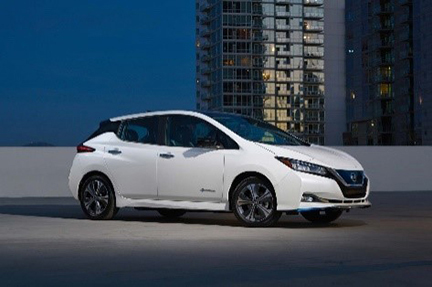While pollutant-free automobiles seem more efficient, buyers will have to consider charging-station availability and whether these vehicles will meet the demands of the driver.
Car dealers began importing Electric Vehicles (EV) over one year ago when customs and duty exemptions came into effect for the importation of electric vehicles. But the continued demand for the eco-friendly vehicle will depend on their performance and capacity to meet money-saving demands. With no public charging available for drivers, owners of these vehicles say that owing an EV is both an advantage and disadvantage.
According to Ramesh Katwaru, a driver of a hybrid electric vehicle and an employee of MS Trading – a car dealership that imports the Nissan Leaf and the hybrid to sell in Guyana – the advantages of having an electric vehicle include having no emissions tied to the operation of the car, as these vehicles are powered with clean, renewable energy. He said that when anyone goes to purchase these cars he always mentions that an EV releases less carbon per mile than its gasoline counterpart.
According to the car dealer, the hybrid EVs use both fuel and charging. “It doesn’t use much current to charge and after the bars go down, the fuel will kick in and the battery recharges while the vehicle drives using fuel,” he explained. He noted that he would have to recharge his car after using it for three days.
When buying an electric car or the hybrid, the car dealer recommends that persons know what they want out of their car. He said that like most regular cars, the electric cars have different capabilities which can accommodate the needs of different drivers. The car dealer explained that there are two basic types of electrical vehicles: the plug-in all-electric vehicles and the hybrid electric vehicles. He explained that the all-electric vehicles run only on battery power and the hybrids are fuel cell electric vehicles, meaning they run on both fuel and electricity. He further explained that an electric-only vehicle owner can plug in the car to charge it from an off-board electrical power source. This distinguishes them from hybrid electric vehicles, which supplement an internal combustion engine with battery power but cannot be plugged in.
A user of the electricity-only EV shared his experience using the car during his day-to-day routine. Mark (not his real name) explained that before buying his Nissan Leaf, he had been driving a regular gasoline-powered car but decided to buy the electric car because of the savings. He said that previously he would spend $10,000 a week on gas, but with his electric car, he only spends an average of $1,500 on electricity when the car is charged three times a week at his home. He noted that the amount of times the car needs to be charged would depend on the driving speed, air conditioning use, and distance travelled.
Mark admitted that the cost of the car spurred his desire to purchase one. He said that at the time that he made the purchase, he could not afford a car with duty added to its cost. “It’s duty-free and I knew that if I wanted a new car I could pay for one without duty attached,” the man said. He also said that he finds his Nissan Leaf to be efficient enough as it met all his demands. He has been using his Nissan since last year.
As for the distance these cars can go before needing to be recharged, it depends on whether the vehicle was fully charged before venturing on the journey Mark explained. He recalled having driven from Providence to Timehri and back, then from Providence to Sophia after fully charging his vehicle [more than 12 miles] and that it had used about 65 per cent of its battery power. “It basically depends on how you drive. Just like a regular car, if your drive hard on a regular car you burn a lot of gas. Well it’s the same, if you drive hard you would burn electricity,” the man explained. When preparing for a long trip, he would ensure that the car has been fully charged because there is no place to have the car recharged while on the road, unlike regular cars which have access to gas stations, Mark noted. He also said that the cars ideally can fully charge in 3 to 4 hours with 220 volts and a bit longer with 110 volts.
EVs have an electric motor instead of an internal combustion engine and because it runs on electricity, the vehicle emits no emissions from a tailpipe and does not contain the typical liquid fuel components, such as a fuel pump, fuel line, or fuel tank, Katwaru said. He also mentioned that the vehicle has a charge port which allows the vehicle to connect to an external power supply in order to charge the traction battery pack, a DC-to-DC converter which is a device that converts higher-voltage DC power from the traction battery pack to the lower-voltage DC power needed to run vehicle accessories and recharge the auxiliary battery, and an onboard charger which takes the incoming AC electricity supplied via the charge port and converts it to DC power for charging the traction battery.





